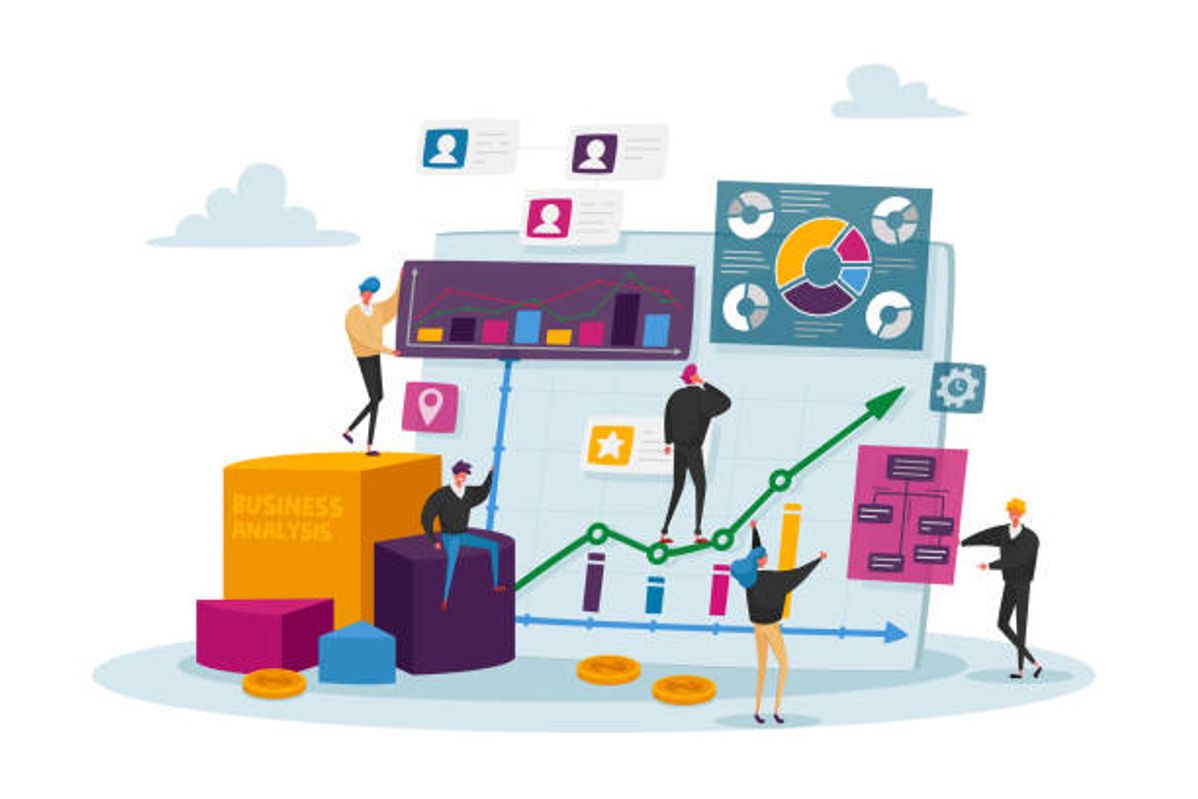Who Is a Data Analyst? And What Are Their Services?

The job of a data analyst is to collect and analyze data to solve a particular problem. The position necessitates a lot of data analysis, but it also necessitates conveying results. The data analyst acts as a gatekeeper for an organization’s data, ensuring that stakeholders understand it and utilize it to make intelligent business decisions. A data analyst will, in general, obtain and gather data, arrange it, and use it to draw valuable conclusions.
Role of a data analyst
Businesses increasingly use data across all sectors to make crucial business choices, such as which new goods to create, which new markets to join, which new investments to make, and which new (or current) clients target. They also utilize data to discover inefficiencies and other issues that the firm needs to address.
The data analyst’s task in these companies is to provide a numerical value to these critical business operations to measure and compare performance across time. However, an analyst’s work is more than simply looking at numbers: they must also understand how to use data to help a business make better decisions.
These are in high-demand positions. By 2020, IBM predicts that there will be more than 2.7 million job vacancies for data professionals, with approximately 40% of advanced data analytics occupations needing a master’s degree or above. The typical beginning yearly income for entry-level data analysts is in the $60,000 range; however, success in the profession can lead to senior roles with salaries surpassing $135,000 per year.
Here are some of the primary daily routine roles of a data analyst. Let us have a look at them:
Gather data:
Data analysts frequently acquire data on their own. Conducting surveys, tracking visitor characteristics on a corporate website, or purchasing datasets from data-gathering professionals are all examples.
-
Clean data
Duplicates, mistakes, and outliers may exist in raw data. Cleaning data keeps data in a spreadsheet or computer language in good shape so that your interpretations aren’t biased or incorrect.
-
Model data:
It requires constructing and designing database structures. For example, you could decide what sorts of data to retain and gather, how data categories connect, and how the data looks in real life.
-
Interpret data:
Finding patterns or trends in data to assist you in solving the subject at hand is what data interpretation entails.
-
Present:
A big part of your job will be communicating the results of your research. It accomplishes this through creating visualizations such as charts and graphs, generating reports, and presenting data to interested parties.
Key Responsibilities of a data analyst
The answer to the question “What does a data analyst do?” will differ based on the sort of company and how it implements data-driven decision-making methods. In general, though, a data analyst’s tasks usually involve the following:
- Data systems and databases are designed and maintained, including addressing coding mistakes and other data-related issues.
- Data mining from primary and secondary sources, then restructuring the information into a manner that humans and machines can read.
- We are using statistical methods to analyze data sets, focusing on trends and patterns that might be useful for diagnostic and predictive analytics.
- They demonstrate the importance of their job in the context of local, national, and international trends that affect their company and industry.
- We prepare executive reports that use pertinent data to express trends, patterns, and projections effectively.
- They identify potential for process improvements, recommend system upgrades, and develop data governance policies in collaboration with programmers, engineers, and organizational executives.
- Creating suitable documentation enables stakeholders to comprehend the data analysis process and, if required, reproduce or repeat the analysis.
How does a data analyst help a company?
A business data analyst is someone who has extensive business understanding as well as a strong ability to analyze data. This individual is constantly looking for ways to improve efficiency and expand company chances. At present, there are many top companies for data analyst.
In today’s environment, business data is one of the most precious assets firms have. When adequately handled, it may transform this collection of unstructured and unorganized data into high-quality data. A business data analyst transforms this content into strategic knowledge in business-oriented optimization work. And, let’s face it, corporate decision-making is a significant responsibility. Managers are often in charge of this task, although they are no longer independent. At this moment, data business analysts have gained a considerable position.
It is challenging to examine procedures, propose modifications, and implement new features, especially when it comes to technology. As a result, having someone devoted to this task, making judgments based on facts, is critical. A Business Data Analyst’s function is growing increasingly similar to a supporting manager’s. As a result, these specialists play an increasingly crucial role in businesses. As a consequence of their efforts, they may be able to propel organizations to the next level of competitiveness.
How to become a data analyst
A profession as a data analyst can take many different forms. Whether you’re fresh out of school or seeking to change jobs, the first step is evaluating your transferable talents and developing the new skills you’ll need in this new employment.
Database tools:
Any data analyst’s toolkit should include Microsoft Excel and SQL. While Excel is commonly used across sectors, SQL can handle more enormous data volumes and is usually considered a must for data analysis.
Programming Languages:
If you master a statistical programming language like Python or R, you’ll be able to manage large amounts of data and solve difficult equations. Even though Python and R are among the most popular, it’s a good idea to look at numerous job descriptions for a position you’re interested in to discover which language will be most useful in your company.
Data Visualization:
Being a great data analyst requires you to present your results clearly and persuasively. Knowing how to show data in charts and graphs can ensure that coworkers, employers, and stakeholders understand what you’re doing.
Statistics and math:
Understanding the fundamentals underlying what data tools accomplish can significantly assist you in your work. Having a thorough understanding of statistics and arithmetic will assist you in determining which devices are ideal to utilize to tackle a specific problem and catch data inaccuracies.



